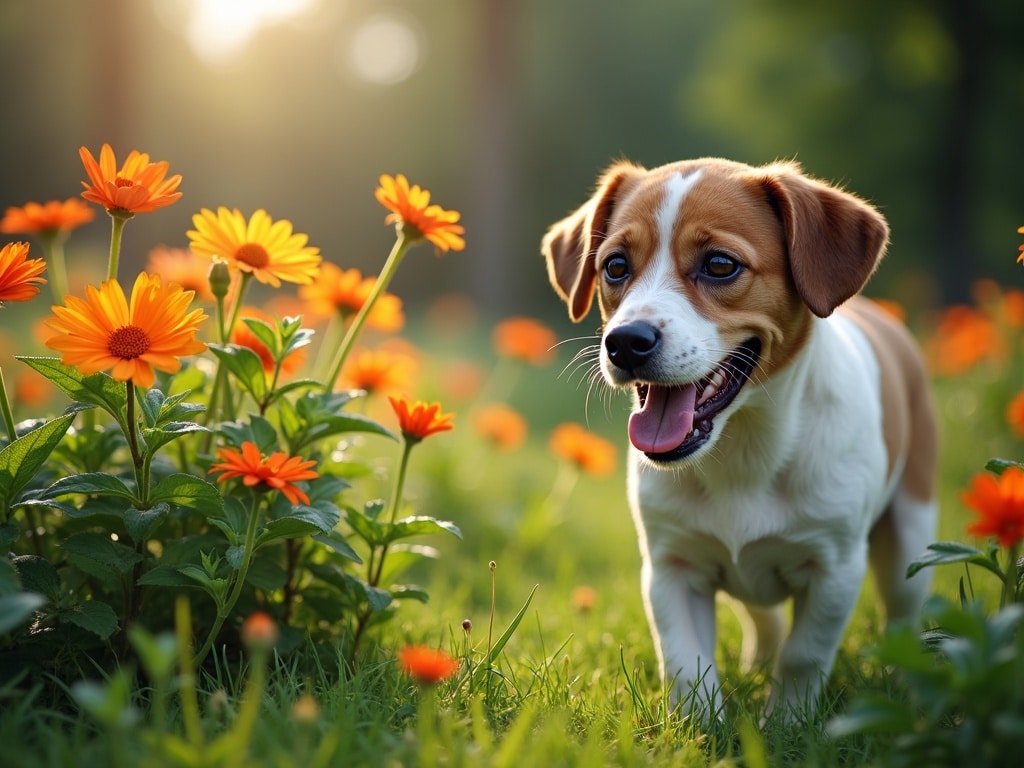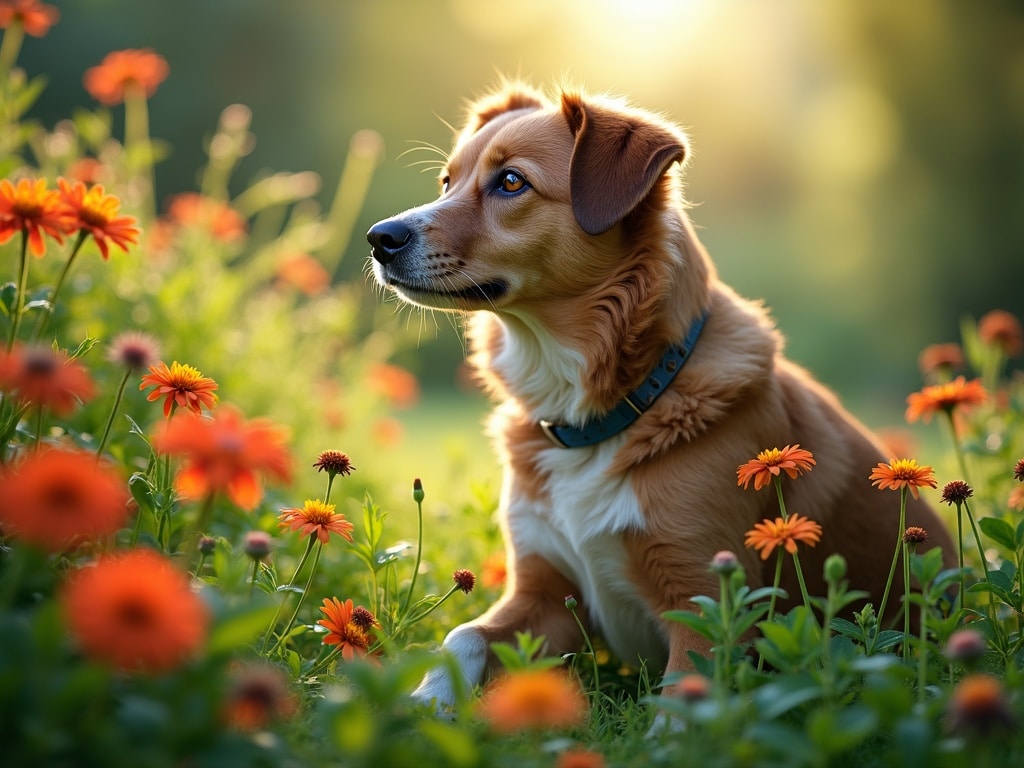Is Your Garden a Death Trap? Toxic Plants Every Dog Owner Should Know
Imagine your furry friend frolicking in the garden, sniffing at flowers, and basking in the sunshine. It’s a picture of idyllic bliss, right? But lurking amidst the beauty might be hidden dangers: toxic plants that could turn your dog's playful paradise into a health crisis. As responsible dog owners, we must be aware of these potential threats. This guide will illuminate the toxic plants that could be lurking in your garden and how to protect your beloved canine companion.
What Makes a Plant Toxic to Dogs?
Plants can be toxic to dogs for a variety of reasons, primarily due to the presence of certain chemical compounds. These compounds can affect different systems in a dog's body, leading to a range of symptoms from mild discomfort to severe organ damage or even death.
- Glycosides: These compounds can interfere with heart function.
- Oxalates: These can form crystals that damage the kidneys and other organs.
- Alkaloids: A broad class of compounds that can affect the nervous system, digestive system, and more.
- Saponins: These can cause gastrointestinal upset and, in some cases, neurological issues.
The concentration of these toxins can vary depending on the plant species, its stage of growth, and the part of the plant ingested (leaves, stems, roots, flowers, or seeds).
Which Common Garden Plants Are Poisonous to Dogs?
Many popular garden plants can be dangerous for dogs. Here are some common culprits:
- Lilies: Highly toxic, especially to cats (though still a concern for dogs). Can cause kidney failure.
- Azaleas and Rhododendrons: Contain grayanotoxins that affect heart and nerve function, leading to vomiting, diarrhea, and even coma.
- Tulips and Daffodils: Bulbs are the most toxic part, causing severe gastrointestinal distress, convulsions, and cardiac issues.
- Sago Palm: Extremely toxic; all parts of the plant can cause liver failure and death.
- Oleander: Contains cardiac glycosides, affecting the heart and potentially causing death.
- Castor Bean: Contains ricin, a potent toxin that can cause severe abdominal pain, vomiting, diarrhea, and organ damage.
- Hydrangeas: Can cause gastrointestinal upset and cyanide poisoning.
- Tomato Plants (Green Parts): The leaves and stems contain solanine, which can cause gastrointestinal issues, depression, and confusion. Ripe tomatoes are generally safe.
- Onions and Garlic: While typically a cooking ingredient, these are toxic to dogs and can cause anemia.
What Are the Symptoms of Plant Poisoning in Dogs?
Symptoms can vary depending on the plant ingested, the amount consumed, and the size and health of the dog. Common signs include:
"Unlock the Secrets to a Blissful, Healthier Puppy: Discover the Benefits of Holistic Housebreaking"
- Vomiting
- Diarrhea
- Excessive drooling
- Loss of appetite
- Lethargy or weakness
- Abdominal pain
- Tremors or seizures
- Difficulty breathing
- Increased thirst and urination
- Skin irritation or rash
- Collapse.
If you observe any of these symptoms, especially after your dog has been in the garden, seek veterinary attention immediately. Don't wait to see if the symptoms subside on their own. Early intervention can significantly improve your dog's chances of recovery.
How to Identify Toxic Plants in Your Garden
Prevention is key and starts with knowing exactly what's growing in your garden.
- Take Inventory: Create a list of all the plants in your garden, including their scientific names if possible.
- Consult Resources: Use online databases, books, and your local veterinarian to cross-reference your plant list with known toxic plants for dogs. The ASPCA website is an excellent resource.
- Label Plants: Clearly label each plant in your garden, so you can quickly identify them in case of ingestion.
- Take Pictures: Keep a photo album of your garden plants for easy reference, especially when consulting with your vet.
Consider posting a list of plants, both safe and toxic, inside your house for quick reference.
First Aid for a Dog That Has Ingested a Poisonous Plant
If you suspect your dog has ingested a toxic plant, act quickly and calmly:
- Remove the Plant: Immediately remove any remaining plant material from your dog's mouth and surrounding area.
- Identify the Plant: If possible, identify the plant your dog ingested. This information is crucial for your veterinarian. Bring a sample of the plant with you to the vet, properly sealed.
- Contact Your Veterinarian: Call your veterinarian or a pet poison control center (like the ASPCA Animal Poison Control Center) immediately. Be prepared to provide details about the plant, the amount ingested, and your dog's symptoms.
- Follow Instructions: Follow your veterinarian's instructions carefully. They may advise you to induce vomiting at home, but only do so under their guidance. Do NOT induce vomiting if your dog is unconscious, having difficulty breathing, or has ingested a corrosive substance.
- Gather Information: Have your dog's weight, age, and any existing health conditions ready for the vet.
Time is of the essence, so don't delay seeking professional help.
How to Prevent Your Dog From Eating Toxic Plants
Prevention is always better than cure. There are several steps you can take to protect your dog from plant poisoning:
- Remove Toxic Plants: The most effective way to prevent poisoning is to remove all toxic plants from your garden and home.
- Create Barriers: If removing plants isn't an option, create physical barriers to prevent your dog from accessing them. This could involve fencing off garden beds, using raised planters, or employing netting.
- Supervise Your Dog: Always supervise your dog when they are in the garden. Teach them the leave it command and use it consistently.
- Provide Alternatives: Ensure your dog has plenty of safe chew toys and enrichment activities to discourage them from exploring and nibbling on plants.
- Educate Yourself and Others: Make sure anyone who cares for your dog (family members, friends, dog walkers) is aware of the toxic plants and the signs of poisoning. Share resources like this guide to toxic plants for dogs or Pet Proofing Your House: A Dog Owner's Guide to a Safe Haven.
Are There Dog-Friendly Alternatives to Toxic Plants?
Absolutely! You can create a beautiful and safe garden for your furry friend by choosing dog-friendly plants:
- Sunflowers: These cheerful blooms are non-toxic and add height and color to your garden.
- Zinnias: These easy-to-grow annuals come in a variety of colors and attract pollinators.
- Marigolds: These bright flowers are not only safe for dogs but also repel some garden pests.
- Petunias: These versatile flowers are available in many colors and are perfect for containers and hanging baskets.
- Snapdragons: These unique flowers add vertical interest and are non-toxic to dogs.
- Herbs: Many herbs, such as basil, rosemary, thyme, and sage, are safe for dogs and can be used in cooking.
Consider creating a dedicated dog-friendly area in your garden with these plants, offering a safe space for your dog to explore and enjoy.
What to Do If You Suspect Your Dog Has Eaten a Plant, and You Don't Know What It Is?
If you suspect your dog has ingested a plant but can't identify it, take the following steps:
- Collect a Sample: If possible, carefully collect a sample of the plant, including leaves, stems, and flowers, if available. Place it in a sealed bag or container for identification by your veterinarian.
- Observe Symptoms: Closely monitor your dog for any signs of poisoning (vomiting, diarrhea, lethargy, etc.). Note the time the symptoms started.
- Take Pictures/Video: Document any symptoms with photos or video to share with your vet.
- Contact Your Veterinarian or Pet Poison Control: Call your veterinarian or a pet poison control center immediately. Provide a detailed description of the plant, including its size, color, and any unique features. If you can send them a picture, that is even better.
- Follow Instructions: Follow the instructions provided by your veterinarian or the pet poison control center. They may ask you to bring your dog in for examination and treatment.
Do not attempt to treat your dog at home without professional guidance, as this could potentially worsen the situation. Bring the sample of the unknown plant with you to the veterinarian.
The Role of a Veterinarian in Diagnosing and Treating Plant Poisoning
Your veterinarian plays a crucial role in diagnosing and treating plant poisoning in dogs. They can:
- Assess Symptoms: Evaluate your dog's symptoms and overall condition to determine the severity of the poisoning.
- Identify the Toxin: Use your description and plant sample to identify the specific toxin involved.
- Run Diagnostic Tests: Perform blood tests, urine tests, and other diagnostic procedures to assess organ function and detect the presence of toxins.
- Administer Treatment: Provide appropriate treatment based on the type of toxin and the severity of the symptoms. Treatment may include inducing vomiting, administering activated charcoal, providing intravenous fluids, and prescribing medications to counteract the effects of the poison.
- Offer Supportive Care: Provide supportive care, such as pain management, anti-nausea medication, and nutritional support, to help your dog recover.
- Monitor Progress: Closely monitor your dog's progress and adjust treatment as needed.
Remember, early intervention and professional veterinary care are essential for a successful outcome in cases of plant poisoning. Don't hesitate to seek veterinary attention if you suspect your dog has ingested a toxic plant. You may also want to read, Summer Dog Safety Secrets: Keep Your Pup Cool & Happy to further understand more about a dog's well-being.


